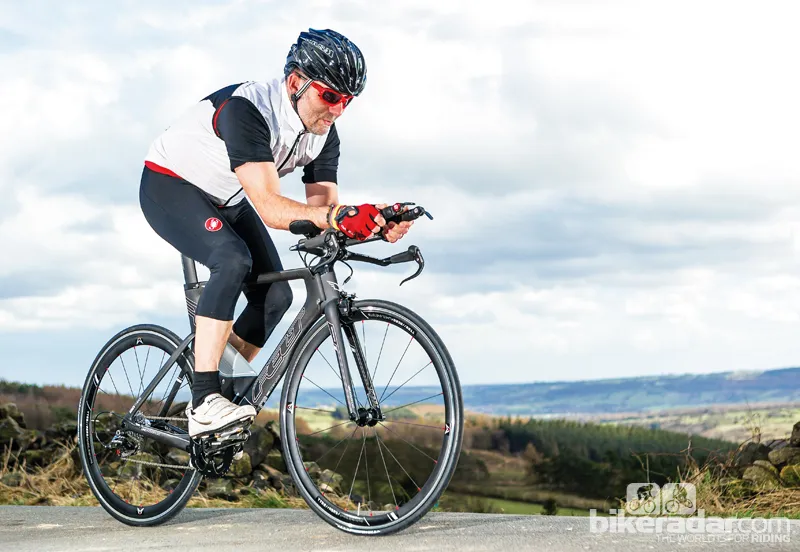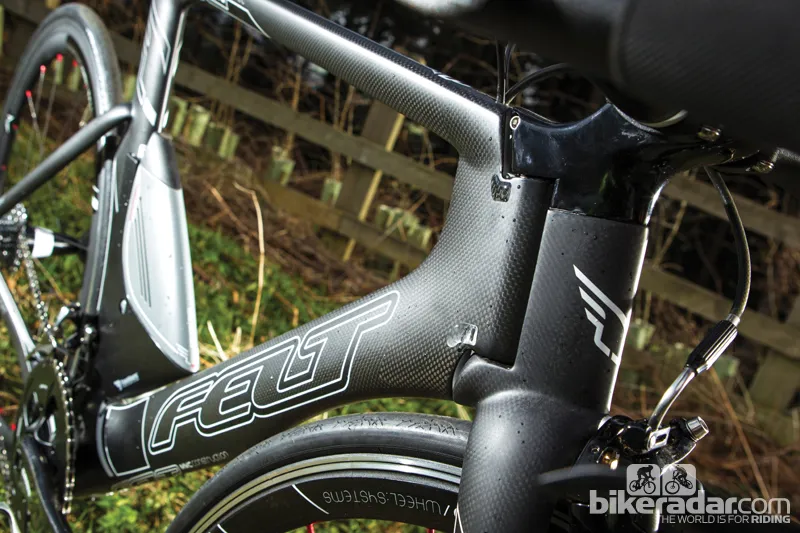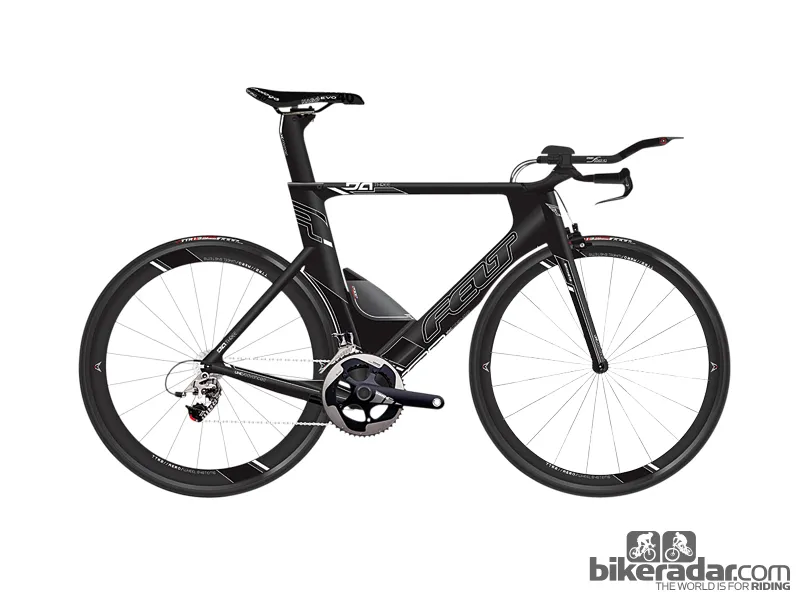The striking-looking Felt DA has been an extremely and deservedly popular bike for some time, but is the mid-range DA3 still swift and smooth enough to compete against the latest frames?
Ride & handling: Front end flex but fatigue-reducingly forgiving
Bayonet-forked bikes always need care at first until you’re used to the restricted turning circle but the DA3’s skinny head tube means you’re unlikely to jam the fork against the small rubber bumpers unless you’re really flopping the bike about.
Once you start rolling, the handling is impressively well balanced and all our testers fell into a comfortable position with minimal faffing. Flat-backed riders found the pronounced rise of the stem irritating but it gives a more friendly and less fatiguing long-haul position.
The frame is usefully forgiving too – you still need to pay attention to the road surface, but it skims off the worst of the rough. The textured-top Prologo saddle helps to stop you sliding about on the bike when churning a big gear along.
The lighter wheels and stiffer cranks give noticeably better acceleration and power delivery than the DA4 we tested last year. It’s a welcome pep to overall performance and helps keep you feeling positive if you have to kick out of a corner or dig deep to defend your position several hours into a ride.
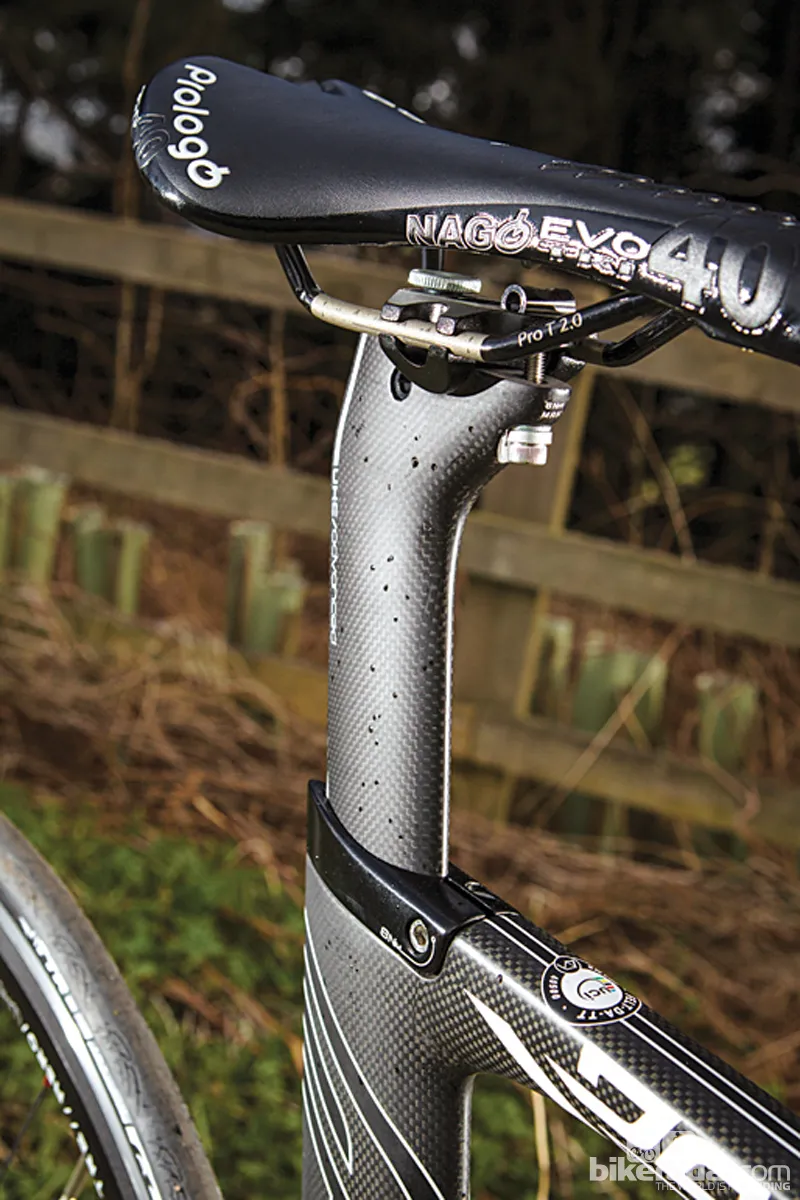
Not the comfiest saddle, but the Felt is still a friendly place to be on longer, rougher rides
The frame isn’t sufficiently heavy that you have to panic if there’s some altitude gain on the agenda but the spongy brakes and skinny levers mean descending is a slightly painful and occasionally panicky affair, so it’s still best suited to flatter courses.
While the back end transfers power okay, there’s a lot of lateral twist and flex in front of the fancy drinks bottle – noticeable if you’re out of the saddle trying to sprint or stomp a climb and very obvious when combined with the narrow-stance spoked front wheel in corners.
This means handling can feel vague and squirmy on windy days with a deep-section wheel. It’s something you’ll adapt to over time, but you need to scan for gusty spots and go with the flow rather than fighting for pin-sharp placement.
Felt’s long triathlon experience shows clearly in this smoothly fast, friendly and reduced fatigue ride. While power delivery is decent, our more aggressive testers did find the flexy front end frustrating.
Frame & equipment: Aerodynamically efficient but heavy chassis
The radical-looking frame-and-fork kit is certainly well proven. The same frame mould is used for the top-of-the-range DA1, which is made from nanoparticle-reinforced carbon rather than the more basic ‘Advanced MMC’ layup found on the DA2 and DA3.
The third-generation Bayonet 3 fork is a refinement of previous designs, using a structural fin in front of the head tube to create a deeper, more aero front section. The steerer and bayonet sections are joined back together by the unique, short-reach gooseneck stem unit.
The narrow down tube is deep enough to need a front wheel cutout, and the aero seat tube is also carved away around the rear wheel. An oversized BB30 axle adds pedalling stiffness while upswept chainstays complete the power circuit.
Bladed seatstays blend into the seat tube fin, with a notched cutout for a flush-mounted seatpost clamp. The seatpost is also aero, with a forward kink at the top giving a suitably steep seat angle and an easier transition onto the run.
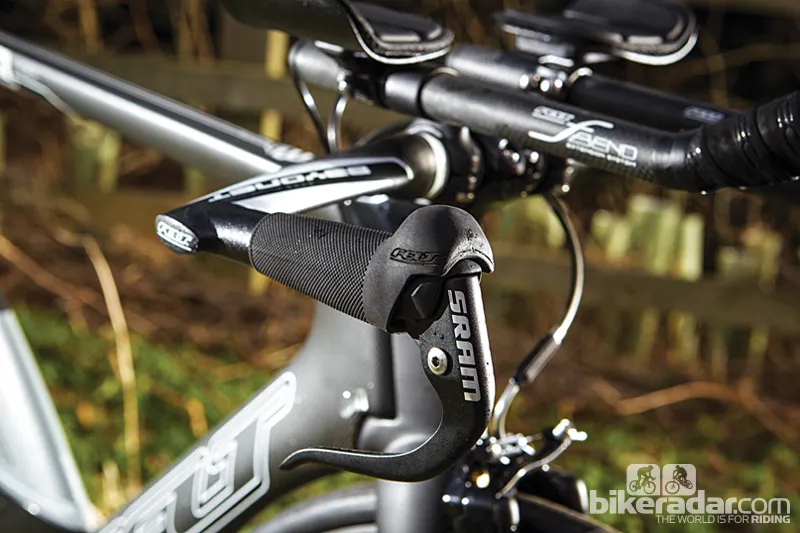
The brake levers are sharp but the rubber base bar grips are great in the wet
While the side-pull front brake is left out front in the breeze, the rear brake is tucked away under the chainstays to reduce drag. Frame and fork weight is relatively, but not excessively, high at 2.16kg (4.76lb), and the chassis is Di2 compatible. There are four 700c-wheeled size options to choose from, as well as a 650c-wheeled 47cm frame for more petite riders.
There’s plenty to talk about in terms of specification but the most striking component is the TorHans aero bottle. This triangular drinks bottle isn’t the easiest to grab or drink from, but it fills in the bottom corner of the mainframe, neatly sidestepping any ‘non-structural fairing’ rules.
The Felt TTR2 wheels use aero-profile 30mm rims for neutral handling and slight drag reduction. The narrow-stance flanges on the front hub and conical-profile rear hub drop a bit more drag and the wheels are a reasonable weight.
The Felt cockpit is excellent too, with moulded rubber grips on the slim base bars and well-shaped extensions that can be raised with optional spacers, plus the stem has a custom rise and extension for each frame size. Even the firmly padded Prologo saddle is more forgiving than it initially felt on long-haul rides.
The SRAM Red gears are the lightest available and while the SRAM chainset is a non-groupset part, it’s a usefully stiff setup with size-specific arm lengths. There’s also an adjustable catcher to stop a fumbled shift jamming the chain against the frame.
This article was originally published in Triathlon Plus magazine, available on Zinio.
